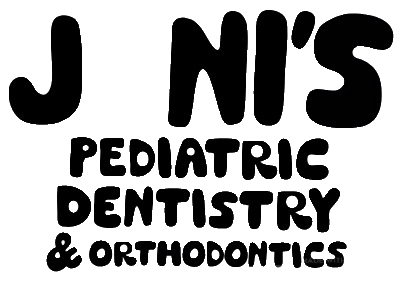FAQs
Find Answers to Frequently Asked Pediatric Dentistry Questions Here…
The American Academy of Pediatric Dentistry (AAPD) suggests scheduling your child’s first dental visit by their first birthday. Starting preventive care early gives children the best chance at avoiding cavities as they grow. With the right amount of fluoride, consistent brushing habits, a nutritious diet, and routine dental checkups, your child can build a strong foundation for lifelong oral health. If you’d like to learn more about caring for your baby’s teeth, we invite you to give us a call to come in for a consultation.
- Schedule dental visits early and keep them consistent
- Encourage thorough brushing two to three times daily and flossing once a day
- Establish a daily routine that includes nutritious meals and limits sugary treats
- Ensure your child gets the right amount of fluoride through water, toothpaste, or supplements
- Follow your dentist’s advice on when to apply protective sealants to your child’s teeth
Cavities don’t happen by chance—they need four things to develop: a tooth, bacteria, carbohydrates (like sugars), and time. Plaque is a thin, invisible film of bacteria that constantly builds up on the surface of teeth. When your child eats, especially sugary or starchy foods, the bacteria in plaque feed on those sugars and produce acid. That acid wears away the protective outer layer of the tooth, called enamel. Over time, repeated acid exposure leads to decay and eventually a cavity. Put simply: the more often your child’s teeth are exposed to sugar throughout the day, the greater the risk of cavities forming!
A frequent concern parents bring up is when their child appears to have two rows of teeth at once. This situation happens often and can sometimes require monitoring. In most cases, giving it some time—typically around 8 to 10 weeks—and encouraging the child to gently wiggle the baby tooth will help it come loose, allowing the adult tooth to come in properly. Occasionally, we may need to remove the baby tooth ourselves. But generally, once the baby tooth is out, the permanent tooth settles into the right place without any issues.
Pediatric dentists are dental professionals who specialize in caring for infants, children, and teens. We’re committed to delivering top-notch dental care and guidance to help kids develop healthy, cavity-free smiles. Think of us as the tooth experts for children—like pediatricians, but for oral health! While we do treat cavities, our main focus is on prevention and tracking your child’s dental development as they grow. Our offices are designed just for kids, and we’re specially trained to care for children with unique medical or behavioral needs.
It’s easy to think baby teeth don’t matter much since they eventually fall out—but they actually play a big role in your child’s overall health and development. These early teeth help kids pronounce words correctly, chew their food effectively, and hold the space needed for adult teeth to come in properly. Some baby molars stay in place until ages 12 or 13—and in some cases, even longer!
If tooth decay in baby teeth isn’t treated, it can lead to serious problems like pain, infection, abscesses, and early tooth loss, which may also harm developing permanent teeth. Losing baby teeth too soon can cause crowding or alignment issues as adult teeth come in, and it may even impact your child’s facial structure. Whether your child is just getting their first tooth or has a full set, we’re here to keep their smile healthy at every stage.
Orthodontic FAQs
Absolutely! We recommend a custom mouthguard for sports to protect their braces and teeth. Most kiddos adjust quickly to playing instruments with braces — it just takes a little practice.
Braces don’t usually hurt, but you might feel some pressure or soreness for a few days after getting them on or after an adjustment. Don’t worry—it goes away quickly, and we’ll share tips to make the transition smooth and comfortable.
Brushing and flossing are extra important with braces. We’ll show your child (and you!) how to brush around brackets and use special flossers to keep their smile clean and healthy.
Some common signs include crowded or crooked teeth, an overbite or underbite, or if their teeth don’t come together properly when they bite. But sometimes, problems are hidden. That’s why an orthodontic evaluation is the best way to know for sure. Best of all we offer free evaluations for all first time patients!
Treatment time varies depending on the complexity of the case, but most people wear braces or aligners for 12–24 months. We’ll give you and your child a custom plan so you know exactly what to expect—and we’ll cheer you on every step of the way!
Most patients come in every 8-10 weeks for adjustments and progress checks. These visits are quick and super important to keep treatment on track.
If something feels loose or pokes the mouth, give us a call. We’ll walk you through what to do and get your child in for a quick repair if needed.
The American Association of Orthodontists recommends a first check-up by age 7. At this stage, we can spot early signs of bite issues—even if your kiddo still has baby teeth! Of course, teens and adults can benefit from orthodontic care too—it’s never too late to improve your smile.
Braces use brackets and wires to move teeth, and they’re great for all types of cases. Clear aligners, like Invisalign®, are removable trays that are nearly invisible—ideal for people who want a more discreet look. Both are effective; we’ll help you choose what works best for your lifestyle and smile goals.
Yes! Retainers keep your teeth from shifting after treatment. Whether it’s a clear retainer your child wears at night or one that stays in place, we’ll guide your child on how to keep their new smile looking great for years to come.
